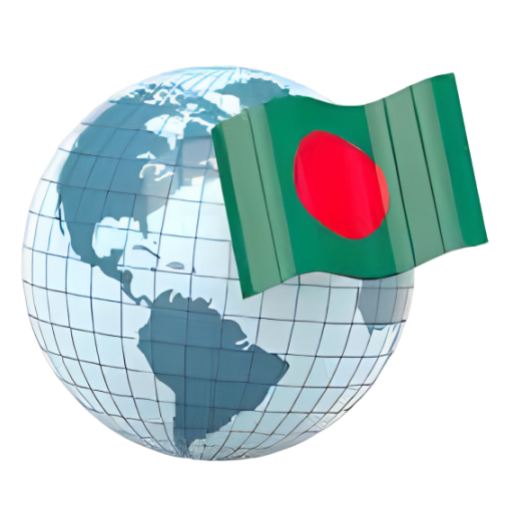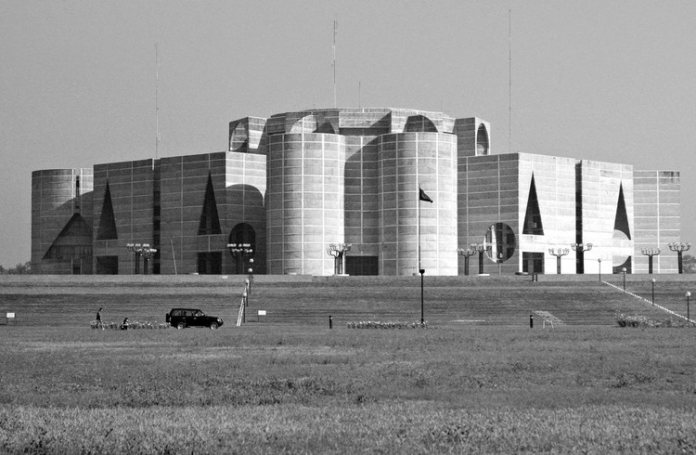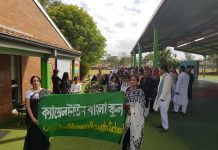Bangladesh rose as an epitome of aspiration. The three principles – human dignity, equality, and social justice – inspired the war of liberation. These normative principles are aimed at achieving the egalitarian objectives of the State. A deeper analysis of these principles reveals the underlying crisis and potentials of nation building in Bangladesh.
Human dignity, equality and social justice
The concept of “human dignity” embodies several intrinsic meanings, denoting that an individual enjoys freedom at the least. Citizenship entails that an individual must be an active participant, indicating his or her political, social, and economic rights. The liberals have favoured “negative freedom”, i.e., the rights of non-interference, absence of obstacles, and no harm to others. Therefore, citizenship and rights, at the minimum, go hand in hand, and are inalienable.
 The concept of “equality” requires a detailed introspection into the political processes, institutions, and State-building. This sheds light on the workings of the processes of differentiation and polarization, and how, on a deeper level of abstraction, the intersectionality between the processes results in overaccumulation of capital through increasing returns to capital vis-à-vis labour.
The concept of “equality” requires a detailed introspection into the political processes, institutions, and State-building. This sheds light on the workings of the processes of differentiation and polarization, and how, on a deeper level of abstraction, the intersectionality between the processes results in overaccumulation of capital through increasing returns to capital vis-à-vis labour.
The concept of “social justice” denotes liberation from unjust economic, political, and social conditions. Here some pertinent questions are: Are the citizens of Bangladesh receiving justice in terms of the distribution of wealth, opportunities, and privileges within the society? Does the State provide basic services such as education, health, housing, transportation, and social security to all her citizens? Has the State been able to enact progressive taxation and regulation of markets to ensure fair distribution of wealth, equal opportunity, and equality of outcome? Has the State been able to guarantee freedom of thought, liberty of conscience, representative democratic institutions, freedom of assembly and association?
Deficits and crisis
The fundamental crisis of the Bangladesh polity is the citizens’ disempowerment. For example, there are questions: Are the citizens empowered enough that they are freely enjoying and practising, according to their thoughts and conscience, the freedoms of voting, speech, expression, association, assembly, and movement? As such, the main pillars of the State, namely a functioning judiciary, an effective parliament, and a civil administration to implement the political mandate for the people given by the people to the elected representatives of the people, continue to erode.
The spurt in economic growth, despite many interpretations including lamentations such as “surprise” or “paradox,” was made possible in large part by the migration of the underemployed from the countryside to urban cities and flowing out to the world over, mostly concentrating in West Asia. The remittances from home and abroad have fuelled largely consumption-led economic growth. Consumption is one of the four elements of gross domestic product (GDP), and the others are investment, government expenditure, and the net of exports and imports.
The continual greater than before participation of women in the labour market and women entrepreneurship along with their demonstrated resilience have led to inspiring changes. The farmers have continued to work tirelessly in their green croplands, with innovation and intensity, despite distress sales of products, without fair prices, high input costs, and changing climatic conditions. There has been a creeping rise of entrepreneurships. Despite labour being the heart of such development, labourers are dispossessed in a number of ways. There is a growing disparity between the rate of growth in employment and unemployment, implying fragility of absorption capacity and vulnerability of labourers to low wages and the disregard of rights.
Differentiation as the inherent processes in a political system enables conflicts between groups of individuals based on power and wealth, allowing for exploitation and unequal distribution of private property. This process causes “precariatization” of employment – an emerging class, comprising the rapidly growing number of people facing lives of insecurity, moving in and out of jobs that give little meaning to their lives. Precariatization and repression of institutions further deepens the unequal distribution by promoting a polarization of the classes.
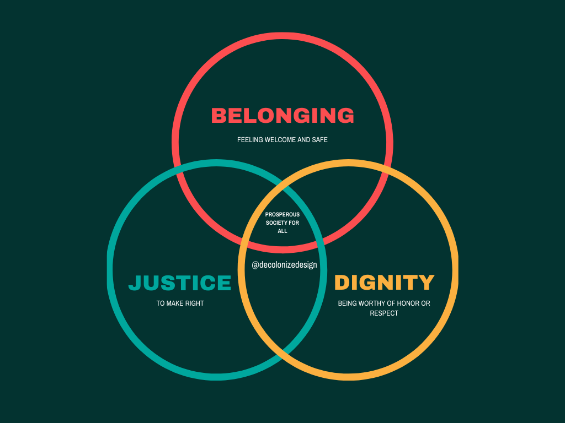
The process of pauperization was set off by critical issues: a large informal sector that failed to protect labour rights, low coverage of social safety nets, and the deficiency of a comprehensive social security program. Together, these issues triggered large scale income erosions, particularly among the urban vulnerable population employed in the industrial sector and informal sector, and significant losses in agriculture among the rural population. As a result, pauperization may have triggered the emergence of a class of “new poor”—households that lost income due to the fallout from the pandemic and were pushed below the poverty line.
As a result of the pauperization, differentiation may have occurred through two main avenues – the policy-induced impacts of vertical inequality and the systemic reasons of horizontal inequality. Vertical inequality refers to the deepening inequality between households, and horizontal inequality relates to the difference between groups of similar origin or cognitive ability, which may arise due to economically, politically, or culturally formed disparities between them.
Instead of polarization leading to a class-divided society where conflicts and crises lead to political change, the nature of the political settlement further deepens polarization through state policies that favour the vested interests of certain income groups. On one hand, packages for large industries, benefits for government employees, job security and incentives in the formal sector have allowed certain income groups to accumulate more wealth and power.
On the other hand, job losses in the informal sector, absence of social security, savings, and insurance, and losses incurred by cottage, micro, small, and medium enterprises (CSMSEs) and the agriculture sector led to further erosion in income of other groups. These worse-off income groups contributed to the creation of the new poor in society, while worsening the conditions of the existing poor. Altogether, this eventually led to the rise in inequality and polarization between the classes.
The COVID-19 has exposed the deep divide in society. Income cuts disproportionately affected those surviving in a mediocre standard of living, and this pre-existing income inequality is likely to worsen because extraction of liquidity from powerful elites is being neglected as a source of revenue.
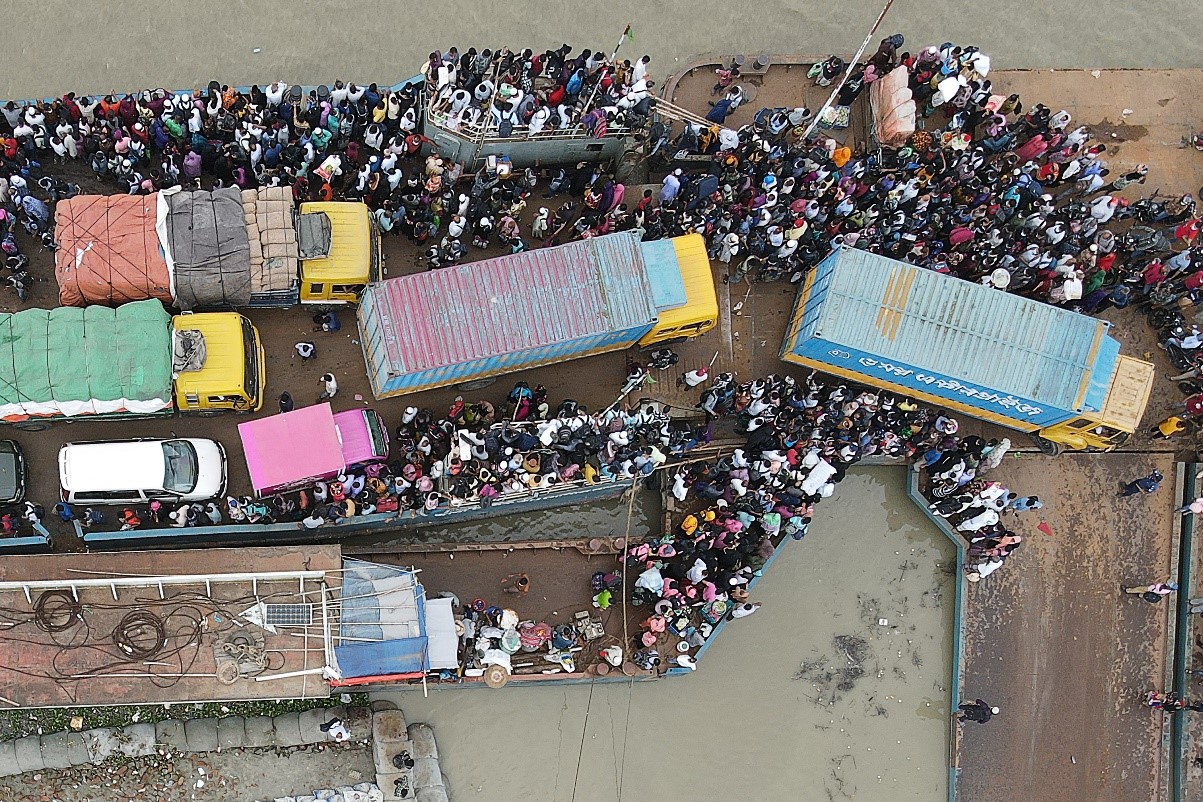
There exists some intersectionality between the processes of differentiation and polarization as well, which may multiply the adverse consequences for income groups with less power.
The political process in Bangladesh has evolved in a particular direction, corresponding to the characteristics of the incentive-structure. The particular form of materialist incentives of primitive accumulation of resources through use of power and coercion has led to a system of clientelist political networks in Bangladesh. The clientelist resource-dependent networks, for perpetuating their objective of accumulation of wealth and power, are symbiotically connected vertically (local, regional, and national) and are intrinsically interlinked horizontally with business, administration, law-enforcing agencies .and judicial system.
The basis for such a nexus usually emerges from the intention to perceive participation in politics as a form of investment, and this has led to an innovative form of incentive structure for the “political entrepreneurs”. Therefore, the allegiance to a certain party in power arises not from legitimacy or adherence to political ideology, but rather from the clientelist relationship, resulting in exchanges of political power and captured public resources. The economic rents also flow out of the country as exhibited through increased capital flight from Bangladesh.
Unlimited Potentials
Bangladesh is a country of unlimited potentials. The size of the economy was just six billion USD at the time of independence. From then, it took the country 37 years to reach the milestone of a hundred billion USD. To add the next hundred, the country took just eight years, as it grew by more than 6% on average during that time. Labour utilization through the booming readymade garments and out-migration has led to this stupendous economic growth. Of course, the farmers also performed a significant role as the country reached near food self-sufficiency and a leading exporter of agricultural products.
Thus, Bangladesh has now become one of the emerging developing countries in Asia, and it is expected to continue its high economic growth. It is forecasted that the GDP of Bangladesh would reach the trillion-dollar mark in the year 2033.
Pitfalls of GDP and challenges

While the size of the economy of Bangladesh may surpass many countries in Asia, per-capita GDP, a measure of living standard, will remain comparatively lower. The quantitative progress in terms of GDP gets overshadowed by the GDP per-capita statistics. Hence, the transformability conditions or the conditions required for the country to move to the next stage of development remain a challenge.
Both necessary and sufficient conditions are prerequisite for the transformation. Necessary conditions include productive capacity, capabilities, and entitlement, as well as social security. These conditions directly influence an economy’s structural transformation. Productive capacity is achieved through industrialization, diversification, competitiveness, and technological catch-up.
Structural transformation is also affected by the capabilities of the labour force. Universal healthcare and education enhance the capability of the labour force. Social security is another factor that denotes structural formation as it is an indicator of healthy living conditions in a country. Sufficient conditions are the political settlement and sustainability. The sustainability incorporates the issue of environment and biodiversity, as climate change threatens the future development of Bangladesh.
Over different periods of history, many countries have seen rapid economic progress, but only to last a short period of time. Very few countries have been able to sustain the economic progress and ultimately reach the goal of raising the living standard of their citizens. The case of East Asia is particularly important for Bangladesh in its aim of reaching the trillion-dollar mark because these countries have been able to maintain the economic growth at a level to eventually converge with developed countries. The good sign for Bangladesh is that, in many indicators, Bangladesh has been showing similarities with newly industrialized East Asian countries.
However, there remain a great number of challenges to overcome. Firstly, GDP does not necessarily replicate the living standard of a country or disparities or environmental degradation that may occur in the process. The living standard, measured by the state of health, education, and income has not grown as much as the GDP. Secondly, the calculation of GDP itself is problematic for developing countries, where in many cases GDP is overestimated. Hence, measuring the health and outlook of an economy solely based on GDP will not provide an accurate picture.
Furthermore, any discussion regarding the GDP is seriously constrained by the lack of availability of GDP statistics, particularly the quarterly GDP reports that many developed countries produce regularly to provide an accurate image of the economy. Having quarterly statistics would no doubt render more accurate projection of the economic health of Bangladesh.
Another factor that limits any economic projection is uncertain economic events. In this instance, one foreseeable event that casts a shadow on any projection of GDP and future economic conditions is climate change. There needs to be adequate and gradual measures in place to deal with shocks like climate change. It will also depend on the ability of the government to undertake green transition and necessary technologies to steer transformative pathways.
The country is expected to reach the trillion-dollar mark, but the challenge is whether that would lift the population out of poverty and eventually raise the living condition. The growth would only converge when certain sectors are transformed in Bangladesh. This requires not only economic transformation, but also the transformation of human capabilities.
In the critical sectors like education and health, Bangladesh is yet to make progress at the tertiary level. The progress in these sectors is stagnant. Inequality has persisted over the years, and for some parts of the country, it has deteriorated. Adequate measures like social security are still largely absent. Industrialization, another factor for the structural transformation, requires a skilled and healthy workforce. Hence, it is imperative to focus on harmonization between structural transformation and human resource development to take the country towards its ultimate goal.
Transformative Pathways
The perennial concern of politics is that no political party has been able to hand over the power to another political party in Bangladesh. Another major concern is that the political parties in power have never ensured accountability.
A reign of oligarchic clientelism has been established, based on the State’s unilateral power of using force. There is a collusion of “money maker” and “rule maker”. Thus, the market is not allowed to function as an invisible hand due to the visible hand – power and authority – which is skewed and concentrating every day.
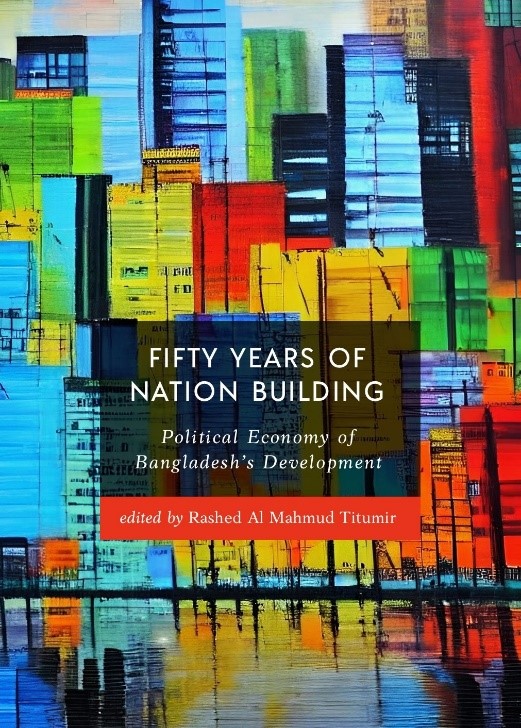 The gradual corrosion of institutions has hindered allocation of resources to productive sectors. Together with regulatory dilapidation due to deinstitutionalization, stagnation in the ratio of private investment to GDP, and rise of capital flight have become major challenges.
The gradual corrosion of institutions has hindered allocation of resources to productive sectors. Together with regulatory dilapidation due to deinstitutionalization, stagnation in the ratio of private investment to GDP, and rise of capital flight have become major challenges.
Although the country’s economic development is considered by certain quarters as a “miracle”, the growth has largely been led by consumption, not due to a rise in savings or investments. It is not a sustainable path of development. In a consumption-based economy, import demand remains very high, and such import pressure could cause problems in balance of payments, as has been the case in Bangladesh.
A country cannot withstand any external shock if it is plagued by patron-client politics, power asymmetry and rent-accruing by the powerful quarters at the cost of limited access orders for ordinary masses. When the political settlement does not belong to most of the people (median, not majority), clientelism takes root, amassing resources (rent). The resource-dependent syndicate eats away systems through deinstitutionalization and political centralization. As a result, institutions falter to provide services to citizens, and the idea of a citizen-state becomes a far cry.
The policymaking in Bangladesh has remained fraught with orthodoxy and lack of creativity despite quantitative, but not qualitative, economic and social progress. These have been further aggravated due to the lessening of the rights. Another key overriding challenge is to develop and enhance productive capacity and provision of public services for a decent living. This would require productive use of technology and infrastructural facilities. Skills – much beyond the traditional concept of education – and technology are key elements in the future transformative equation. So are the questions of employment creation and reduction in inequality to establish a fairer society.
For economic growth and social development to be sustainable, the sufficient condition is a representational public order. Only a democratically accountable system of governance can advance the three core principles of the War of Independence. All these lead to the idea of establishing a new social order through a new social compact between the citizens and the State. Bangladesh’s hopes rest on pluralism and an inclusive political system can engender actualization of its unlimited potential.
This article is based upon two chapters, Titumir, R. A. M. and Adiba, A. I. J. 2024. “Class, Power, and Political Settlement in Bangladesh: A Historical Institutional Analysis,” and Titumir, R. A. M. and Haider, W. 2024. “Towards a Trillion-Dollar Economy: Reflections on and Prospects for Bangladesh at Fifty”, – published in Titumir, R. A. M. (ed.) Fifty Years of Nation Building: Political Economy of Bangladesh’s Development. Dhaka: University Press Limited.

Rashed Al Mahmud Titumir
Rashed Al Mahmud Titumir is Chairman, Department of Development Studies, University of Dhaka and founder Chairperson of an independent thin-tank, Unnayan Onneshan, Bangladesh. Professor Titumir has worked in diverse constituencies, namely, academia, governments, think-tanks, international organizations and media. He is engaged in research for pioneering approaches to developmental public policies and innovative solutions on the ground. E-mail: rt@du.ac.bd
